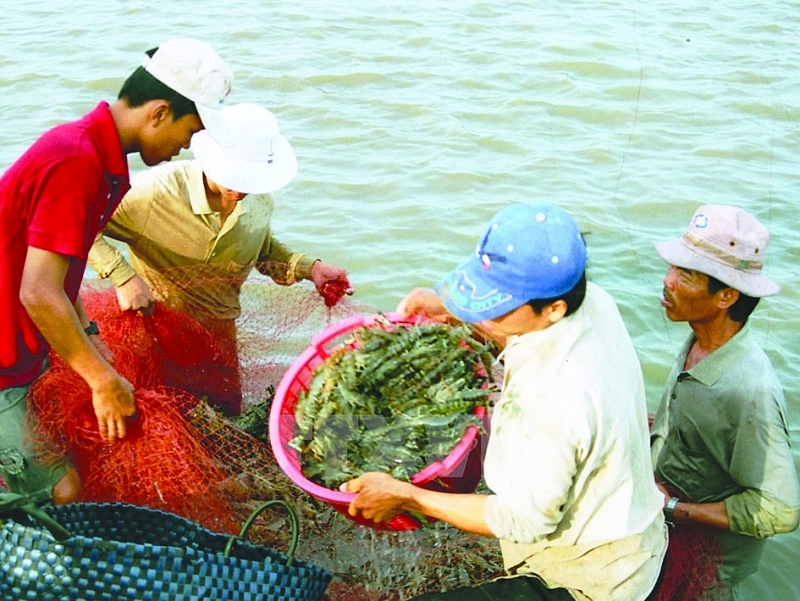Seafood enterprises propose solutions to address specialized inspection issues
Enterprises for resolution have proposed many inadequacies in specialized inspections affecting the production and export of seafood.
 |
|
Input materials are a major current issue seafood enterprises |
According to Truong Dinh Hoe, Secretary General of the Vietnam Association of Seafood Exporters and Producers (VASEP), there are regulations on quarantine for seafood products that change their purpose of use from imported raw materials for export production or processing to domestic consumption.
Currently, there are no guidelines on "changing the purpose of use" of the imported raw materials mentioned in the Circulars on the quarantine of imported seafood from the Ministry of Agriculture and Rural Development (MARD) to allow businesses to change the purpose of use for imported goods. This creates a regulatory gap that does not meet the practical needs of businesses and production operations.
The regulations on changing the purpose of use of imported raw materials for export production or processing to domestic consumption should align with existing legal regulations in other similar fields where customs allow businesses to change the type of imported goods.
According to Decree 59/2018/ND-CP dated April 20, 2018 (Clause 12, Article 1) and Circular 39/2018/TT-BTC dated April 20, 2018 (Clause 10, Article 1) on customs procedures and inspection, supervision, and control, untaxed imported goods are still permitted to change their purpose of use as long as the customs declarant must re-declare the new customs declaration and comply with the management policies and tax policies for the new type of imported goods.
Hoe stated that the regulations on changing the purpose of use form a necessary legal framework for state management and practical business needs. When changing to any type, businesses must follow the full declaration process and be inspected according to the current regulations of that type. The competent authority (Veterinary Department/MARD) has adequate control tools to ensure that seafood shipments converted to another import type do not pose food safety risks.
Based on this reality, to facilitate seafood businesses, VASEP proposed that MARD consider adding regulations on quarantine for seafood products that change their purpose of use from imported raw materials for export production or processing to domestic consumption.
Besides this issue, currently, seafood exporters are facing issues related to Food Safety Certificates (H/C) for imported seafood raw materials from New Zealand for processing and exporting to the EU.
Presently, finished products made from raw materials imported from New Zealand have not been recognized by the competent authorities (Quality, Processing, and Market Development Department and its units) as meeting the requirements for obtaining necessary certificates (H/C) for exporting the shipments to the EU. This is because the content on the H/C issued by New Zealand's competent authority is not complete or compatible with Section XI - the seafood export program to the EU as stipulated in Decision 5523/QD-BNN-CCPT dated December 21, 2023, by MARD.
However, VASEP believed that the EU and New Zealand have a bilateral agreement on sanitary measures for trade in live animals and animal products, as stipulated in Decision 97/132/EC (signed on December 17, 1996) and several supplementary and guiding decisions, including EU Decision 2015/1084 (signed on February 18, 2015).
Therefore, seafood shipments exported from New Zealand to the EU still proceed normally under Decision 97/132/EC with an agreed H/C sample between the EU and New Zealand. Based on this reality, businesses propose that MARD consider, based on mutual recognition agreements and the practical situation, accepting the H/C samples from countries that have agreements with the EU.
Additionally, MARD should consider resolving the issuance of H/C for finished products made from imported raw materials before Decision 5523 took effect.
The certification time for S/C at fishing ports is problematic. Currently, the S/C issuance at fishing ports after businesses bring raw materials to the factory is prolonged in many places, taking a lot of time, sometimes months, or several shipments taking 2-3 months, significantly affecting the production and export activities of businesses.
In response to this situation, VASEP proposed that MARD consider changing the regulations on the approach for issuing S/C at fishing ports in the current IUU traceability verification process. Specifically, issuing S/C immediately to the owner once they have completed unloading raw materials from the vessel under the supervision of port staff regarding the type and quantity at the fishing port. This is the key to resolving many current inadequacies and bottlenecks in the IUU control process.








